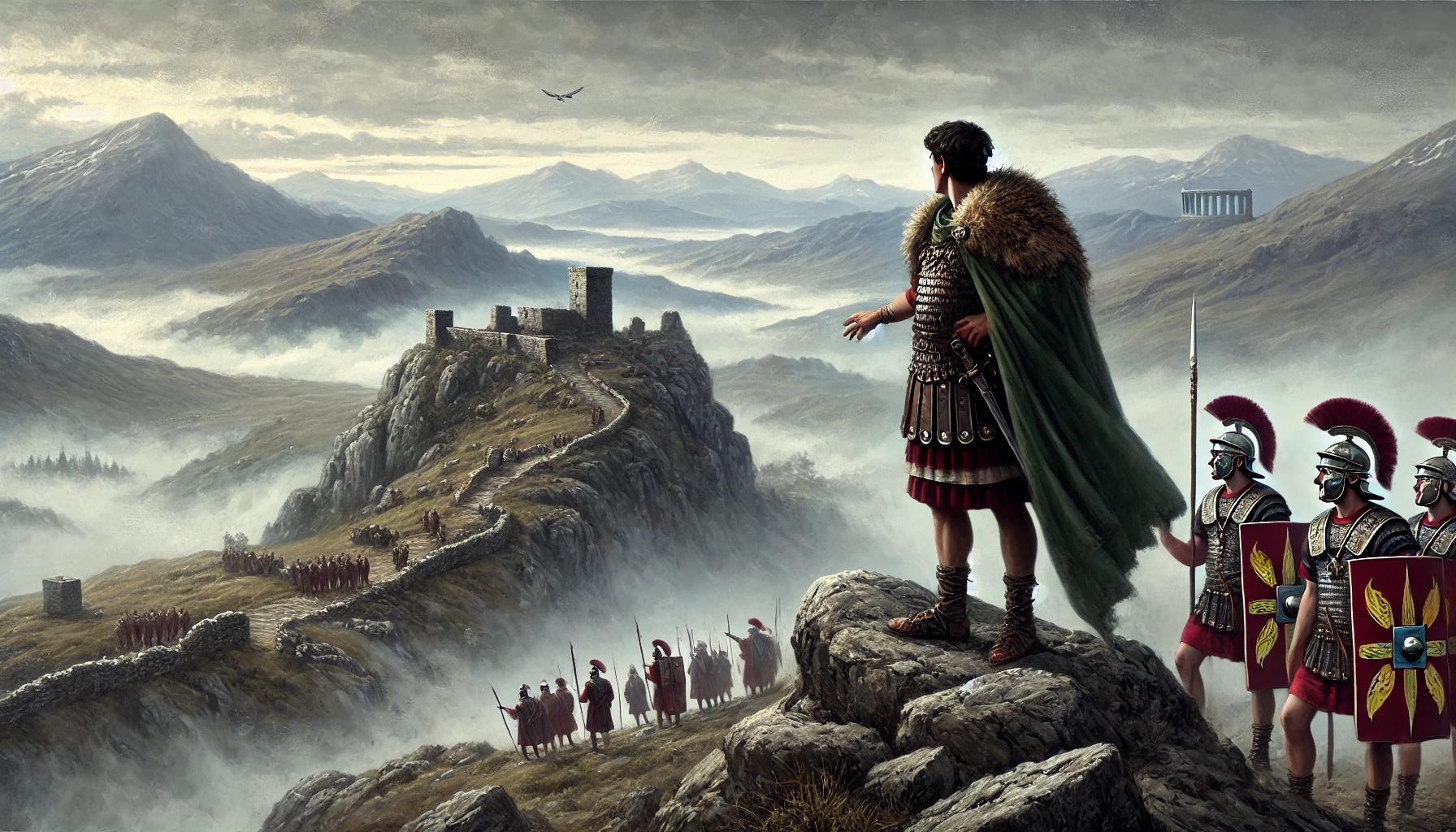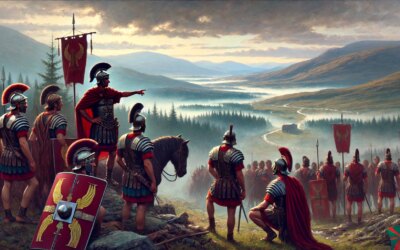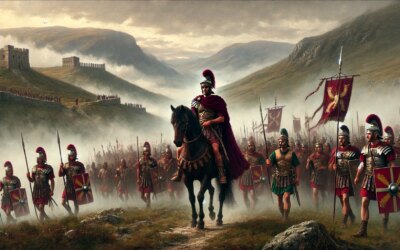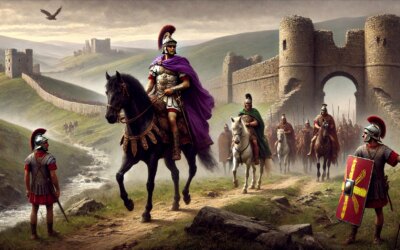Introduction: Rome’s Far-Flung Frontier
In the year 83 AD, the Roman Empire stood at its territorial zenith—its legions enforcing order from the Sahara to the Scottish highlands. At the extreme edge of this vast realm, Gnaeus Julius Agricola, governor of Britannia, cast his gaze northward. His goal: the untamed lands of Caledonia, modern-day Scotland. In doing so, he pursued not only conquest, but a deeper Romanization of Britain—facing fierce resistance, unforgiving terrain, and the limits of imperial power.
Agricola: Soldier, Administrator, Reformer
Appointed by Emperor Vespasian in 77 AD, Agricola was no ordinary governor. Educated, disciplined, and pragmatic, he combined military prowess with strategic patience. His campaigns pushed Roman control farther north than ever before, while also laying foundations for civic life—building roads, establishing towns, and promoting Roman customs among the native Britons. Tacitus, his son-in-law, would immortalize him in a biography that remains one of the most insightful portraits of a Roman official.
The Northern Campaigns
In 83 AD, Agricola led a major campaign into Caledonia. Roman forces marched through highlands and glens, constructing forts and outposts to secure their advance. They faced not just natural obstacles, but tribal coalitions adept at guerrilla warfare. Among these were the Caledonians, a fiercely independent people led by chieftains who resisted subjugation. Agricola’s strategy combined swift mobility with fortified encampments, aiming to extend Roman influence through both arms and infrastructure.
The Battle of Mons Graupius
The campaign culminated in what Tacitus describes as the Battle of Mons Graupius. Although the exact location remains uncertain, the confrontation saw Agricola’s legions face a massive Caledonian force. Roman discipline and superior tactics prevailed, with reports of over 10,000 Caledonian casualties. Despite the victory, the logistical and political cost of holding northern Britannia proved steep. Agricola chose not to pursue total annexation, instead consolidating Roman control in the lowlands.
Romanization and Resistance
Beyond warfare, Agricola sought to transform Britannia into a Roman province in culture as well as law. He encouraged the construction of Roman-style homes, the adoption of Latin, and the establishment of schools. Tacitus claims that these efforts subtly undermined native traditions, fostering a veneer of loyalty that masked deeper tensions. In the north, however, Roman influence remained fragile and often illusory.
Recall and Aftermath
In 85 AD, Agricola was unexpectedly recalled to Rome by Emperor Domitian—possibly out of jealousy for his growing reputation. Though offered honors, he never again held public office. His departure marked the high point of Roman expansion in Britain; later emperors would retreat from Caledonia, building Hadrian’s Wall as a permanent frontier decades later. The dream of a fully Roman Britain remained unfulfilled.
Legacy of Agricola
Agricola’s legacy is both military and cultural. He demonstrated that Romanization could be achieved not only through conquest, but through administration and education. His campaigns left a lasting imprint on Britain’s infrastructure and urban layout. Tacitus’s biography frames him as an ideal governor—firm but fair, loyal yet independent, capable yet modest.
Conclusion: Rome at the Edge of the World
In 83 AD, as Agricola stood atop a rocky promontory and surveyed the misty northern highlands, he embodied Rome’s eternal tension: the desire to expand and the need to endure. His march into Caledonia was not just a military endeavor—it was an assertion of civilization at the empire’s margins. Though the legions would one day withdraw, Agricola’s vision of a Roman Britannia echoes still, in ruins, roads, and the cultural memory of an island once tied to an empire’s will.






